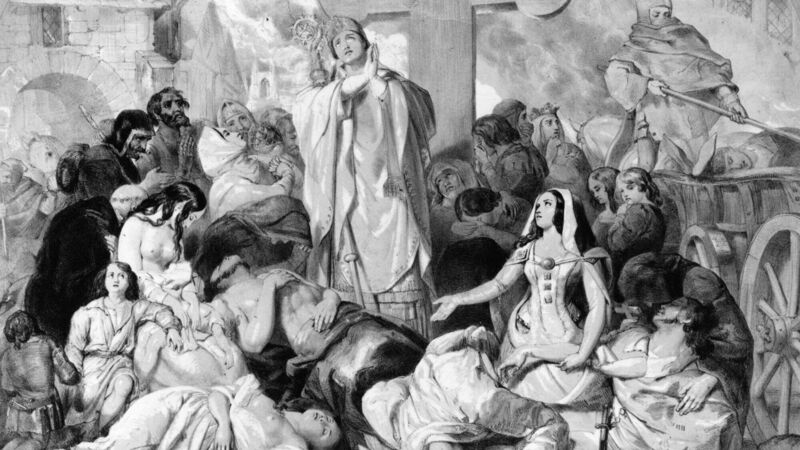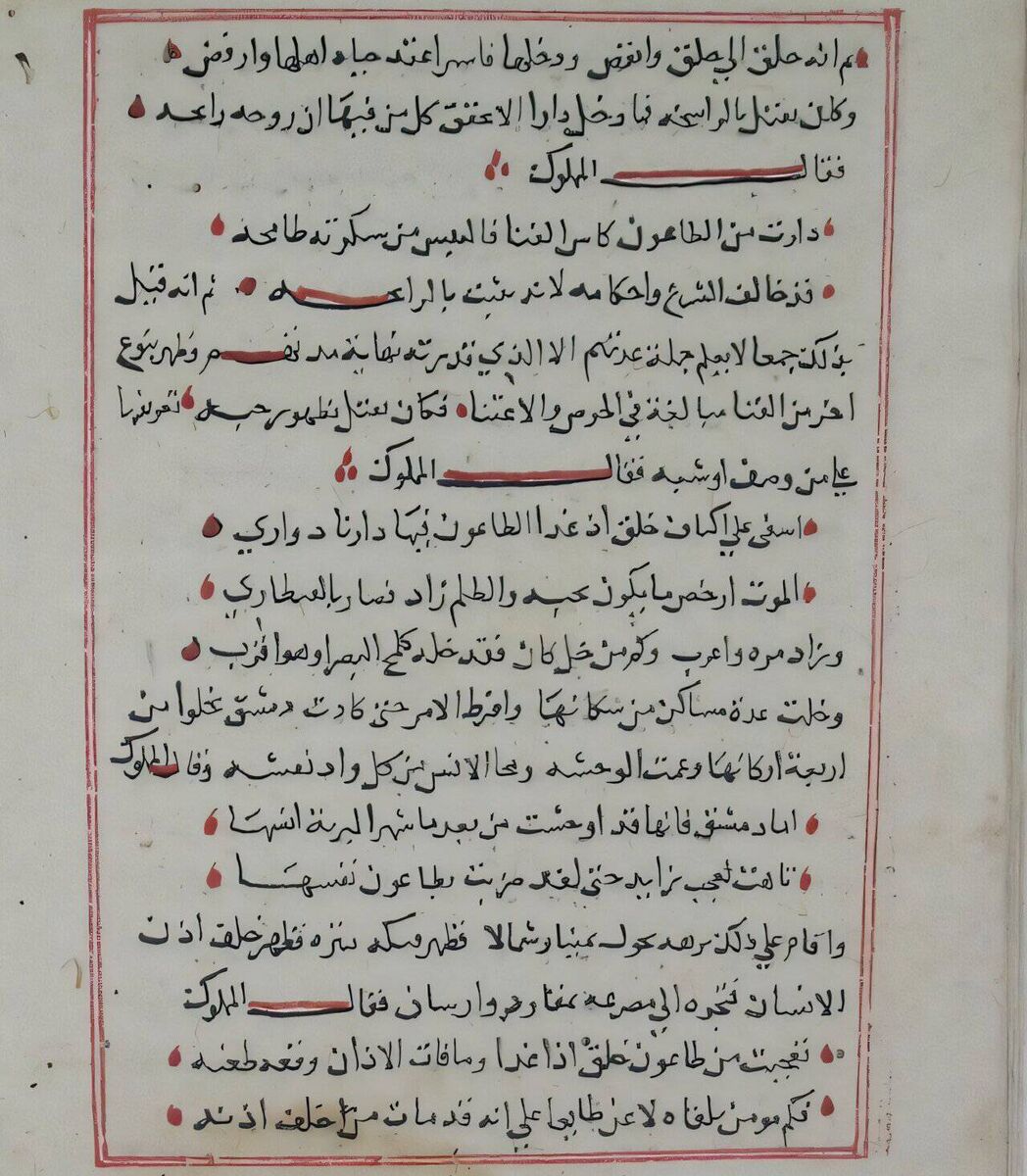Richard Collins: Black Death myths challenged in new research paper

New research reveals that long-held beliefs about how the Black Death swept rapidly across Asia originated from a centuries-old Arabic literary tale, not historical fact. Image: People praying for relief from the bubonic plague, black death. Designed by E Corbould, litograph by F Howard. Picture: Hulton Archive
"What does it mean, the plague? It is life that’s all" — Dr Rieux in by Albert Camus
The Black Death ravaged Europe from 1346 to 1353. More than fifty million people — half the continent’s population — died.
Was it God’s punishment for sin?
Did an astrological conjunction of Jupiter and Saturn cause it?
In 1894 Alexander Yersin, a pupil of Louis Pasteur, identified the plague-causing bacterium, which bears his name.
Yersinia pestis was carried by fleas on rodents, principally rats. A millennium ago, climate change began drying out grasslands in Asia. Black rats there sought sanctuary in human dwellings. When the rats died of the plague, their fleas jumped onto people. #
Bites led to sweating and vomiting. Soon muscle control was lost. Black ‘buboes’, oozing puss and blood, developed on groins and armpits. It could take over a week for a victim to die.
The so-called ‘ship rat’ travelled easily from port to port, taking ‘bubonic’ plague from Central Asia to Europe and Africa. In March 1347, ships carrying the disease docked in Sicily. By the summer of 1348, ‘the pestilence that walketh in darkness’ had reached faraway Ireland. It killed some 14,000 — about 100 a day — people in Dublin.
That it spread so quickly along coasts is not surprising... the seas were the motorways of the time.
But how did it reach locations inland so quickly? If it depended entirely on fleas jumping from rat to rat, moving across country from ports should have been much slower than the historical record indicates.
We now know that a lung-attacking strain of the disease, known as ‘pneumonic’ plague, developed, which travelled directly through the air from person to person. Coughing and sneezing, rather than rats and their fleas, were to blame for the rapid spread.

But the story of the Black Death continues to change. The traditional historical narrative says that the disease, originating in the Far East, was carried westwards along the Silk Route by Mongol armies and traders.
However, in a paper just published, Muhammed Omar and Nahyan Fancy of Exeter University challenge this account. They claim that misinterpretation of a medieval poem led historians astray.
I am very pleased and grateful to share this announcement of our recent award from the@wellcometrust for a project on history of smallpox and measles #histmed #histsci The project will be based@UniofExeter https://t.co/2HbuGTF549 led by @FlemmingRebecca
— Nahyan Fancy (@FancyNahyan) November 19, 2025
Ibn al-Wardi was a poet who lived in Aleppo in the 14th century. Around the year 1348, he penned a ‘maqām’, a poem in a traditional Arabic form written to help people cope with the fear of death. The poem personified the plague as a loose-cannon trickster, who wandered across Asia spreading mayhem wherever he went.
It was not, Omar and Fancy claim, meant to be taken as an historical record. Historians, however, failed to realise this. All early accounts of the spread of the disease derive from this maqāma, the authors say. The so called ‘Quick Transit Theory’, according to which the plague spread from Central Asia to the Mediterranean in less than 10 years, was based on it.
"All roads to the factually incorrect description of the spread of the plague lead back to this one," says co-author Nahyan Fancy. The poem was just a warning that the disease travelled widely and that it tricked people.
History is bunk — Henry Ford.







